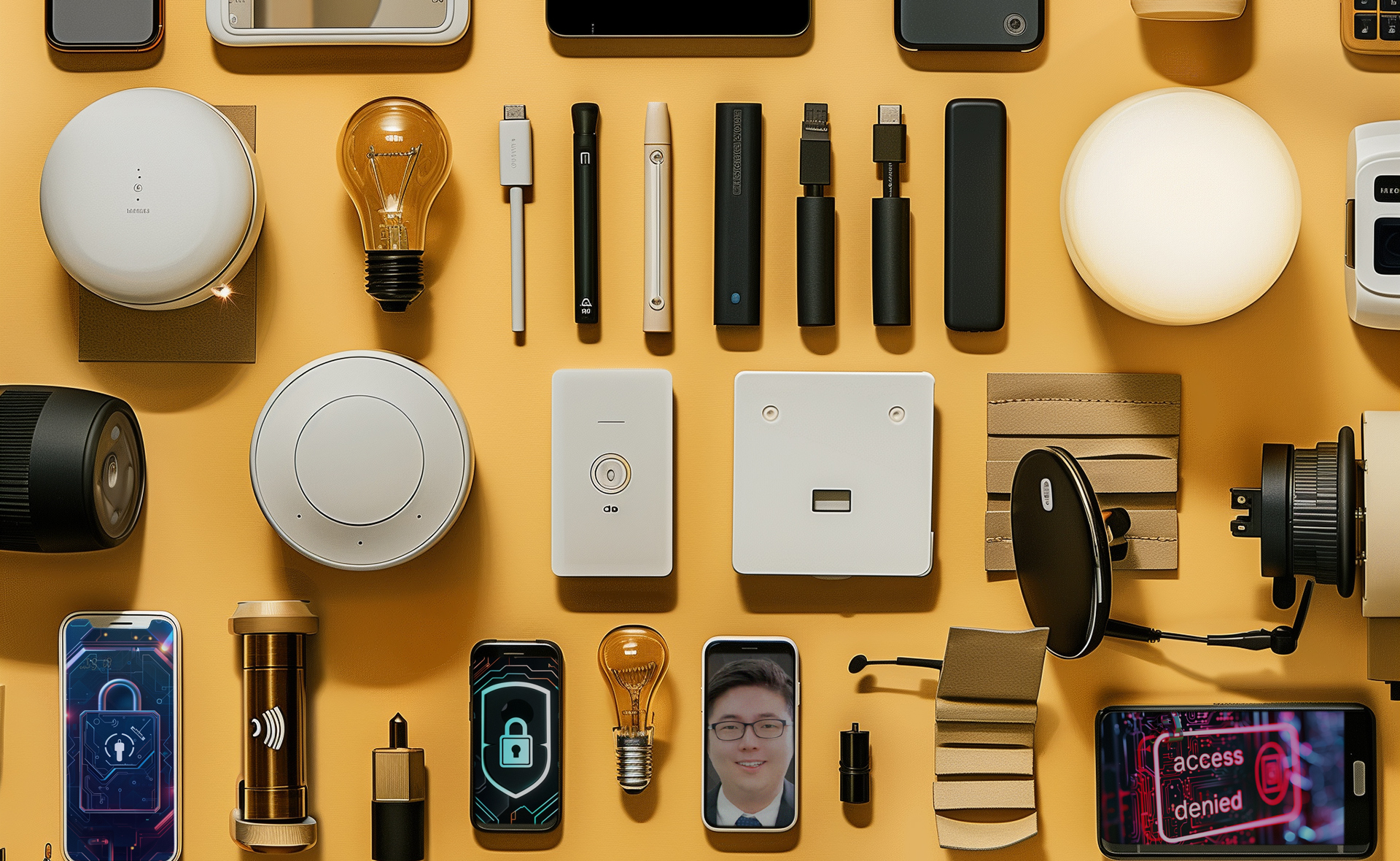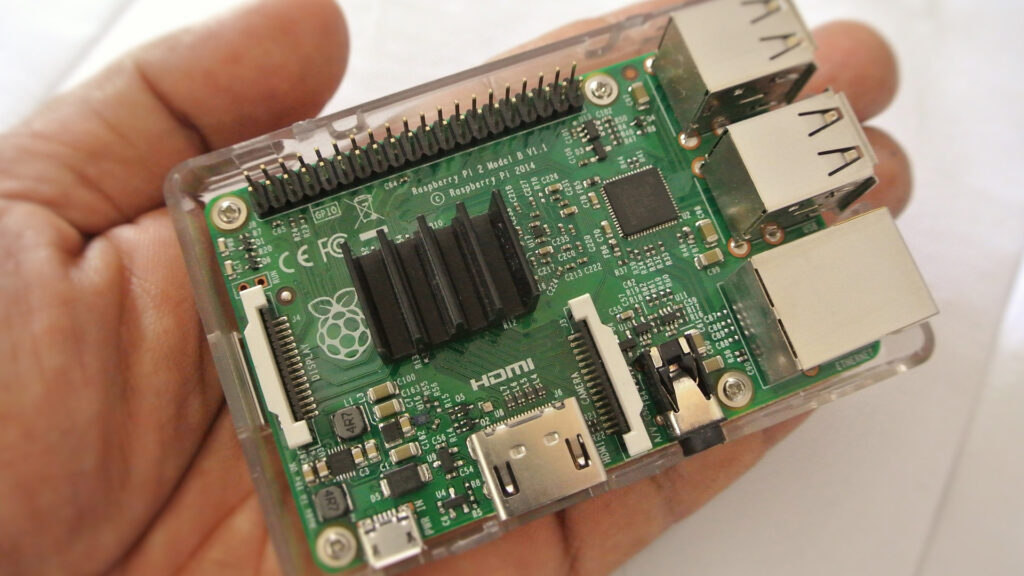
AI on the edge
ASU researcher Hokeun Kim awarded grant to make edge devices safer and smarter

How many light bulbs does it take to change a computer scientist?
In a recent episode of Hulu’s smash hit, “A Murder at the End of the World,” a programmer played by Emma Corrin successfully hacks a hotel’s computer network using information stored on the chip of a smart light bulb, gaining access to guest information, camera feeds and security systems.
Scenarios such as this are becoming increasingly possible thanks to our growing reliance on edge devices — small electronics such as cell phones, doorbell cameras and alarm sensors — that work mainly to transmit data across a network or to the cloud.
Hokeun Kim, an assistant professor of computer science in the Ira A. Fulton Schools of Engineering at Arizona State University, was recently awarded a grant from ATTO Research to help edge devices learn from user data while keeping information safe.
“Historically, edge devices were fairly secure,” says Kim, a faculty member in the School of Computing and Augmented Intelligence, part of the Fulton Schools. “The devices were performing basic functions and transmitting information to data centers where most of the real work was being done. These centers are managed by experts who provide multiple layers of data protection.”
However, edge devices are getting more powerful and storing increased amounts of sensitive data on the devices themselves. For example, smart light bulbs must encode critical information, such as usernames and passwords, on their chips. This allows them to connect to Bluetooth networks to be used remotely. These edge devices are not under the control of computer engineers, yet they are everywhere in homes and businesses and often left unsecured and unsupervised.
Such devices are also becoming capable of artificial intelligence, or AI. A tiny, single-board computer no larger than the palm of your hand, such as a Raspberry Pi, has enough processing power to run a type of AI called a large language model, or LLM, directly on the device. ChatGPT is a popular example of an LLM.
 Tiny computers, like a Raspberry Pi, are capable of artificial intelligence. Photo courtesy of Kritsadaj/Pixabay
Tiny computers, like a Raspberry Pi, are capable of artificial intelligence. Photo courtesy of Kritsadaj/Pixabay
Edge devices are working harder and smarter
But who will determine how edge devices learn? Who will keep them secure? And who is making sure that hackers can’t steal your identity by stealing your lightbulb?
As part of his grant, Kim will work with ATTO Research, a leading company specializing in software-defined infrastructure, or SDI, tailored for research and development in establishing smart city infrastructure and operation systems. The South Korean firm brings expertise in network architecture and a strong interest in machine learning. With innovative SDI technology, the company engages in various sectors, including data centers, private and public IT infrastructure, educational institution networks and administrative information communication networks.
The grant aims to create a middleware solution that will provide tools to edge developers, helping them ensure that devices are both smart and secure.
Kim’s work will design a platform for secure federated learning, a kind of AI where edge devices can learn on their own and then share the results with other devices without exposing the original data that was gathered.
The project will involve creating application program interfaces and code libraries that will help developers make software that allows edge devices to harness the power of AI while preserving the privacy of the datasets. Kim’s work is especially novel because he’s not trying to reinvent the wheel; his solution plays alongside current security standards that engineers already use.
“We’re not seeking to develop new standards,” he says. “Rather, we want to integrate existing standards and cryptography protocols so these can be used for federated learning on edge devices in an efficient way while not losing any security guarantees.”
 Devices like cell phones, fitness watches, doorbell cameras and Bluetooth-enabled speakers live on the edge where the physical world meets the digital world and store increasing amounts of information about their users. Image courtesy of fullvector/Freepik
Devices like cell phones, fitness watches, doorbell cameras and Bluetooth-enabled speakers live on the edge where the physical world meets the digital world and store increasing amounts of information about their users. Image courtesy of fullvector/Freepik
Devices learn to defend data
Kim believes that secure federated learning has the potential to provide incredible benefits. For instance, doctors treating patients suffering from a specific kind of cancer might enter each patient’s information into an edge device. That device could learn about the disease and share its conclusions with other doctors or hospitals without ever sharing any personal medical information.
The first application of the work will be used in an ATTO Research project to build hospital infrastructures, which includes a plan to install small, AI devices in each treatment room.
“For artificial intelligence to be effective, it must learn from medical records collected by individual devices,” says Byeonghag Seong, head of technical research at ATTO. “So, together with Kim, we started researching ways to conduct machine learning without sending personal information to other organizations.”
Kim adds, “These AI federated learning models could be useful for predicting or diagnosing certain diseases. Edge devices would let doctors collaboratively work with other hospitals, for example, without revealing sensitive patient data.”
His work also has innovative potential applications in technology being deployed in smart cities as well as for use on edge devices used by law enforcement and the military.
“Small electronics and edge devices will continue to become more ubiquitous,” says Ross Maciejewski, director of the School of Computing and Augmented Intelligence. “As they do, Kim’s work will pay rich dividends, letting these devices harness the power of AI while keeping sensitive data safe.”
“The way forward,” Kim says, “is for machines to be able to share what they have learned, to share information — but not your information.”



































